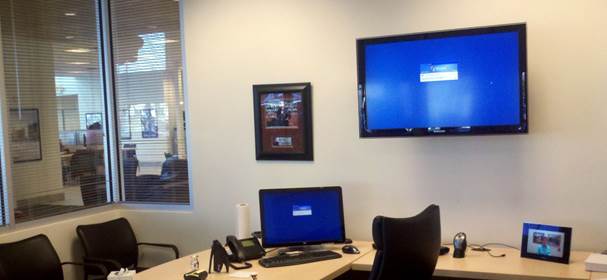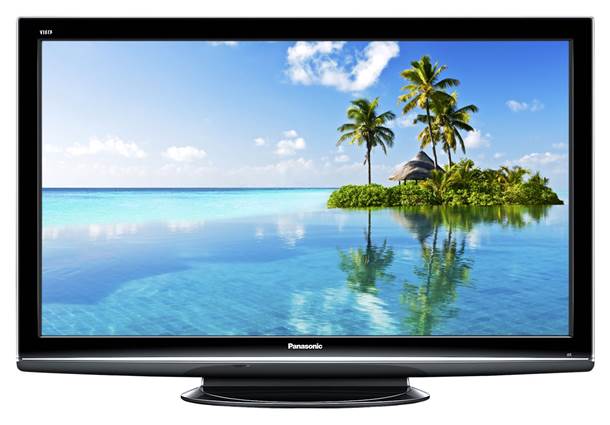1.
What screen size?
Don’t think small and regret it for the
life of the TV. If you sit 6 to 8 feet from the TV, get at least a 40-inch set,
but consider a 46-to 50-inches to get a more immersive experience. For 10 feet
or so, a 55-inch or larger screen would be appropriate. If the screen is too
small for your viewing distance, it’s difficult to appreciate the clarity that
makes 1080p high definition so compelling. Try to simulate your seating setup
in the showroom to see whether the size seems right for the viewing distance

If
you sit 6 to 8 feet from the TV, get at least a 40-inch set, but consider a
46-to 50-inches to get a more immersive experience.
2.
Plasma or LCD?
Many of the highest-scoring models in our
Ratings are plasma TVs, which have several advantages over LCD TVs, Plasmas,
which come in 42-inch and larger sizes, tend to cost a bit less than comparably
sized LCDs, especially those using LED backlights. The best plasmas can provide
rich, movielike images with deep blacks that add depth and dimension. Unlike
most LCD TVs, they have blur-free motion and unlimited viewing angles, so the
color and brightness will look the same from any viewing position. Contrary to
what you might have heard, plasma TVs last just as long as LCD sets.

Plasma
TVs have several advantages over LCD TVs
Newer models don’t suffer from permanent
image burn-in during normal viewing, and they use about the same energy as many
LCD sets with fluorescent backlights. Glossy screens can suffer from glare in
bright lighting, though.
LCD TVs come in a wider range of sizes,
from less than 20 inches to 70 inches and up. The best LCDs have excellent
picture quality and a brighter picture than many plasmas. In a sunny room, an
LCD with a matte screen won’t suffer from reflections and glare. On many sets
motion blur is evident in our tough lab test but might not be obvious in
typical program content, except to keen-eyed viewers. A 120Hz or higher refresh
rate can reduce blur in scenes with fast motion. But the limited viewing angle
of many LCDs can be a concern if you watch the TV from anywhere other than
front and center.
3.
1080p or 720p resolutions?
Most new TVs have 1080p (full HD)
resolution, but some small sets and low-priced 42-and 50-inch plasmas still
have 720p. A 1080p set can display finer detail than a 720p TV, but more detail
doesn’t always result in better picture quality. Some 720p TVs we’ve tested had
very good picture quality. In general, we recommend a 1080p set if price isn’t
a concern, but consider 720p for top value.
4.
4D or not?
3D capability is simply a feature on a
regular high-definition TV, not a new kind of TV. Even if you don’t plan to
watch 3D in the near future, don’t rule out a TV that has feature. Many are
among the best HD sets we’ve tested. And if you get a 3D-capable set, you’ll be
good to go if 3D-capable set, you’ll be good to go if 3D becomes more appealing
to you later.

If
you get a 3D-capable set, you’ll be good to go if 3D-capable set, you’ll be
good to go if 3D becomes more appealing to you later.
Wide
receivers
Plasma TVs have unlimited viewing angles
that make them a better choice than LCDs if you aren’t right in front of the
set.
Internet-capable TVs get smarter
Streaming video is a great reason to get a
TV with Internet capability. Netflix, by far the most – used paid service, is a
given, as is access to free videos on YouTube. Other services aren’t universal,
so see whether a TV has what you want- say, Amazon Instant Video because you
get free videos through an Amazon Prime subscription. Want Blockbuster? Only
Samsung TVs have it.

Connect
a TV to the Internet to watch movies and TV shows when you like.
To Stream video, you have to connect the TV
to your broadband service, either wirelessly via Wi-Fi or by using a wired
Ethernet connection (which can be a bit more stable). Some TVs have built-in
Wi-Fi others require an adapter that sometimes comes with the set. Picture
quality of streaming video can be quite good with most high-speed Internet
services, but you might occasionally experience momentary image degradation or
low resolution.
Music, social media, and more
In addition to streaming video services,
most Internet-capable TVs let you connect to a music service such as Pandora,
social networking sites such as Facebook and Twitter and the auction site eBay.
They often include news and traffic services as well as photo-sharing sites
such as Picasa. Some brands let you download games, fitness apps, and more,
either free or paid.
Increasingly, new smart TVs have Web
browsers that let you surf far and wide. But some TVs don’t support Flash or
HTML 5, which are used on many websites. Also, some sites, such as Hulu, block
devices other than a computer. For now, browsing on a TV is a welcome, though
not a must-have, feature.
Remote possibilities.
The remote also comes into play. If the TV
has only a plain push-button remote, it’s not easy to enter text for a URL or a
search term, observes reader Rolf Thorsen of Deep River, Conn. “it’s tedious to
enter text by pointing at an alphabet on the screen,” he says. “It’s not bad
when you’re just browsing through menus, though.”
Remotes with keyboards can take some of the
tedium out of the process.LG’s Magic Remote uses a Wii-like point-and-click
action for onscreen navigation, and its built-in mic allows for limited voice
control of some functions. Samsung’s E8000 plasmas and ES8000-series LCD TVs
can be controlled (albeit a bit clumsily) by hand gestures and voice commands.
Some new remotes have a touchpad that simplifies navigation. Many TVs that have
sophisticated remotes also come with a regular remote, which can be more
user-friendly for changing channels and adjusting the volume.
Did you know the truth about “LED TVs”
That’s ad-speak for an LCD TV with LED
backlighting rather than fluorescent bulbs. (To those of you who have asked, we
do test them. They’re more clearly identified in the Ratings now.) LED
backlights don’t necessarily result in better picture quality, though some sets
are super-thin and energy-efficient.